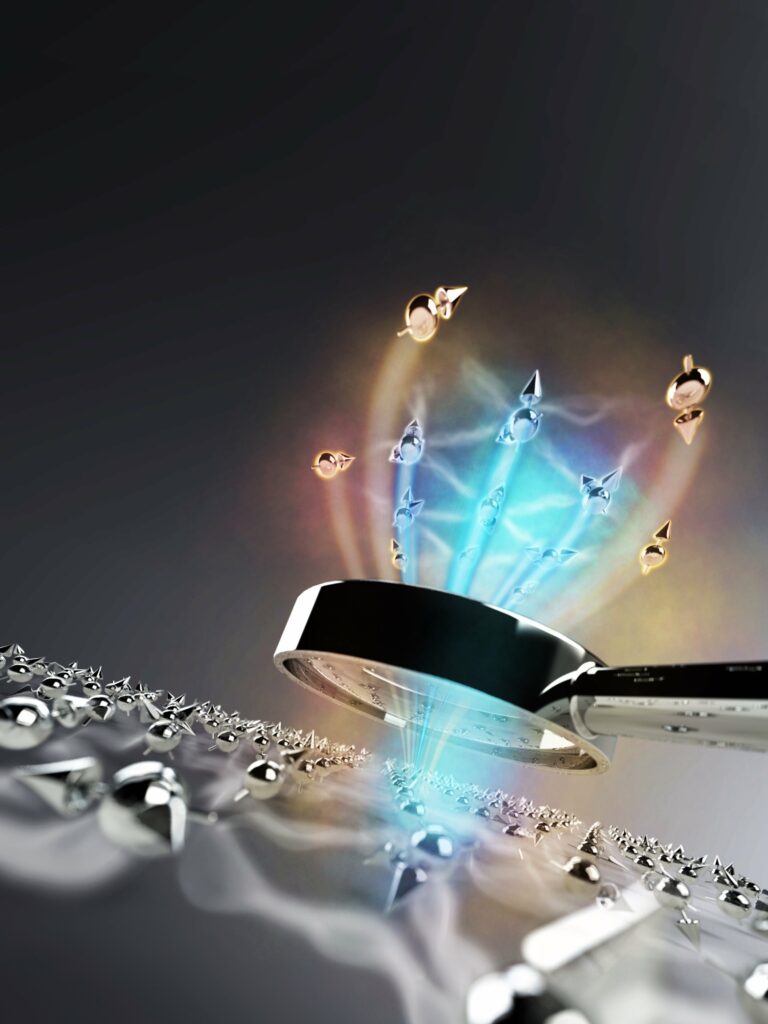Quantum Instrument Unveils Access to Unexplored Phenomena
Entanglement, a quantum phenomenon, involves the interconnected properties of two or more particles to the extent that assigning a definite state to each individual particle becomes impossible. Instead, one must consider all particles collectively sharing a specific state. The entanglement of these particles is fundamental in determining the properties of a material.
“Entanglement of numerous particles is the distinctive feature,” notes Christian Kokail, a primary author of the paper published in Nature. “Simultaneously, however, it is exceedingly challenging to ascertain.” Under the leadership of Peter Zoller at the University of Innsbruck and the Institute of Quantum Optics and Quantum Information (IQOQI) of the Austrian Academy of Sciences (ÖAW), the researchers have introduced a novel approach poised to enhance the exploration and comprehension of entanglement in quantum materials.

To depict extensive quantum systems and glean insights into the existing entanglement, one would typically require an impractical number of measurements. “We have developed a more efficient description that allows us to extract entanglement information from the system with drastically fewer measurements,” elucidates theoretical physicist Rick van Bijnen.
Utilizing an ion trap quantum simulator housing 51 particles, the scientists replicated a genuine material particle by particle, studying it in a controlled laboratory setting. Few research groups globally possess the requisite control over such a large number of particles, a capability demonstrated by the Innsbruck experimental physicists led by Christian Roos and Rainer Blatt. “
The main technical challenge we face here is how to maintain low error rates while controlling 51 ions trapped in our trap and ensuring the feasibility of individual qubit control and readout,” explains experimentalist Manoj Joshi. Throughout this endeavor, the scientists observed experimentally for the first time effects that had previously only been theoretically described. “Here, we have amalgamated knowledge and methods developed over the past years. It’s impressive to see that you can achieve these feats with the available resources today,” says Kokail, who recently joined the Institute for Theoretical Atomic Molecular and Optical Physics at Harvard.
Within a quantum material, particles can exhibit varying degrees of entanglement. A strongly entangled particle’s measurements result in random outcomes, and if these outcomes exhibit significant fluctuations, they are termed “hot.” Conversely, if the probability of a specific outcome increases, it is considered a “cold” quantum object.
The precise state is only revealed through the measurement of all entangled objects. In systems comprising numerous particles, the measurement effort escalates significantly. Quantum field theory predicts that subregions of a system with many entangled particles can possess a temperature profile. Researchers at the Innsbruck quantum simulator utilize a feedback loop between a computer and the quantum system to determine these temperature profiles.
The computer continuously generates new profiles, comparing them with actual measurements in the experiment. The temperature profiles obtained indicate that particles strongly interacting with the environment are deemed “hot,” while those with minimal interaction are labeled “cold.” “This aligns perfectly with expectations that entanglement is particularly large where the interaction between particles is strong,” notes Kokail. “
The methods we have developed provide a powerful tool for studying large-scale entanglement in correlated quantum matter. This opens the door to the study of a new class of physical phenomena with quantum simulators that are already available today,” states Zoller. “With classical computers, such simulations can no longer be computed with reasonable effort.” The techniques pioneered in Innsbruck will also be employed to validate new theories on such platforms.
This article is republished from PhysORG under a Creative Commons license. Read the original article.
Do not forget to share your opinion with us to provide you with the best posts !



0 Comments